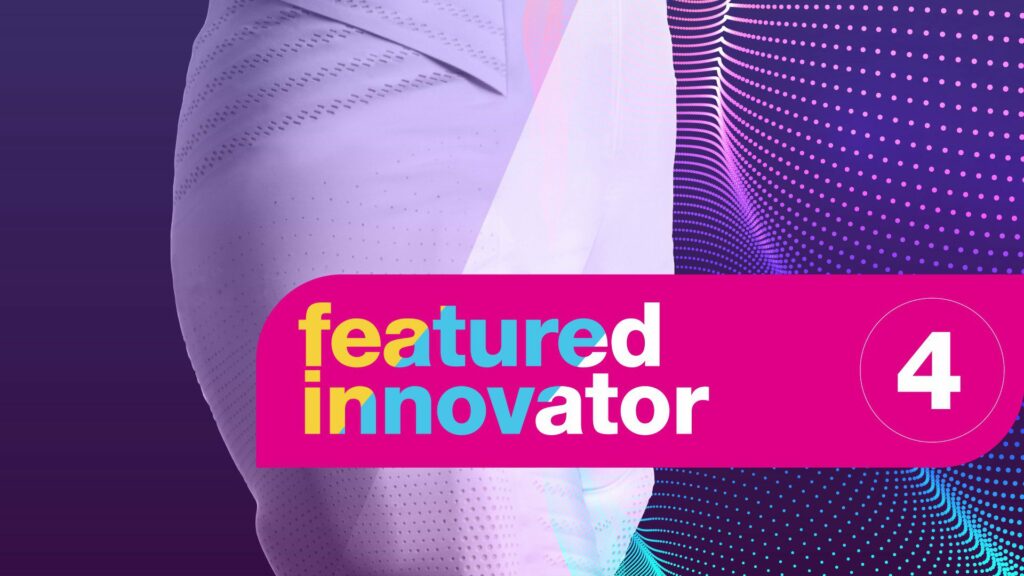
Mahoney is the founder of Seismic, an SRI International spinoff venture that is using robotics to write the future of wearable technology.
For Rich Mahoney, innovation is personal.
Every innovation comes to down a pivotal insight made almost always by a single individual in a moment of inspiration, a “Eureeka!” that reveals a potentially groundbreaking new path to explore.
Mahoney had such an insight while working as executive director of robotics at SRI International. The experience laid the seeds for Seismic, a Menlo Park, CA-based SRI spinoff venture that Mahoney founded.
Currently CEO of the company, Mahoney and his eclectic team of experts at Seismic are helping to write the future of quality-of-life-enhancing wearable technology. They’re doing so by creating functional apparel that’s integrated with discreet robotics.
“We’re developing what I see is the third phase of wearables technology innovation, which is wearables that are part of your everyday clothing,” Mahoney says.
Here’s the story of how Mahoney and Seismic have pushed to the frontier of wearable tech, and the pivotal role SRI played in incubating the evolution.
A career in the commercial marketplace
In New England vernacular, Mahoney is what you’d call “wicked smaaht.” The fact that he earned a Ph.D. in engineering from the University of Cambridge, England, while on a Fulbright scholarship testifies to that. Still, an academic career didn’t hold much appeal. Rather, Mahoney felt his future lay in product development for commercial markets. That preference set the stage for what’s now been an approximately 30-year career in researching, developing and commercializing robotics technologies.
“It was that early career decision that ultimately brought me to SRI,” says Mahoney. “SRI’s mission of doing early stage technology development, innovation and commercialization is a big part of what attracted me to the opportunity with the robotics lab.”
Innovations at SRI
Mahoney joined SRI International as executive director of robotics in 2008. “At the time, the engineering division was resetting the robotics program, and I was hired to build it up,” he says.
Over the next 7 ½ years, Mahoney led the transition of SRI robotics technology into exciting new initiatives. This included helping to foster the creation of multiple early-stage companies that brought cutting-edge robotics to the market. SRI Robotics also became a founding organization of Silicon Valley Robotics, and Mahoney its founding president.
Under Mahoney’s deft leadership, the SRI robotics team also delivered technologies to the Defense Advanced Research Projects Agency (DARPA), as well other government and commercial customers, for healthcare, security and consumer applications. “We did our best work when a client, whether it was a DARPA PM or a commercial partner, brought a problem to us, and we were able to align our technology assets to the problem they wanted solved,” says Mahoney.
Interestingly, Mahoney says that during his time at SRI, the robotics program was consistently managing four pipelines. There was the tech/innovation pipeline — the differentiated core technologies created by the Rich’s team in the robotics program; the government/DARPA pipeline; the commercial pipeline — doing work for particular companies; and, the tech-transfer pipeline, spinouts and licensing of SRI technologies. Progress in each pipeline created opportunities for the next pipeline, leading to almost exponential growth of the robotics group, ultimately becoming an exemplar of SRI’s full business model.
“What I loved about SRI’s model is that you’re taking your core capabilities and applying them to government programs to expand them. Then you’re applying the technologies to your commercial clients to engage the market more closely, licensing them to your partners or spinning them out,” says Mahoney.
A ‘Seismic’ shift
Mahoney enjoyed his time at SRI. He envisioned staying with the nonprofit organization for the long haul. However, work on a particular DARPA-funded program would change the course of his career.
Warrior Web, as the initiative was called, challenged robotics experts to develop wearable technology that would reduce injury risk and enhance solider endurance. In particular, a goal was to see if wearable robotics could be used in way that a foot solider carrying, say, a 100-pound pack would arrive at a destination having expended the same energy and endured the equivalent body impact as if he had been carrying a 50-pound pack. “It was a super difficult problem,” says Mahoney.
While Mahoney admits the target wasn’t quite achieved, significant progress on the technology was made. In that, Mahoney had his inspired moment. He realized the tech developed at SRI under the DARPA Warrior Web program could enable a completely new design space with potentially profound applications beyond just the military. As he worked on plans to commercialize the robotics, along with support from SRI President Manish Kothari and others, Mahoney saw a seismic shift, so to speak, in his future. His direction was changing from more years at SRI to creating a company that would enhance and commercialize the robotics tech as functional everyday apparel.
“I realized this aligned very well with my background and knowledge of the market,” Mahoney says. “and that there was the potential for a large impact, something I really wanted to execute.”
Robotic muscles & the future
And execute it he did.
Originally called Superflex when founded in 2016, the company rebranded as Seismic a couple years later. Powered by a team of experts in textile innovation, robotics, biomechanics, and artificial intelligence, Seismic creates what it calls “Powered Clothing” by fusing the apparel pieces with discreet robotic muscles.
The company’s first collection of Powered Clothing debuted on stage at TechCrunch Disrupt 2018, the world’s largest technology startup conference. Named the “core wellness suit,” the garment is designed to augment strength for the everyday consumer looking to enhance his or her core strength and posture. The suits have robotic components that provide up to 30 watts of power to each hip and the lower back to support daily activities, like sitting, standing, lifting, or carrying.
Completely programmable with sensors, actuators and the like, the suit provides wearers 20% to 30% more strength, Mahoney says. That’s a huge boon to quality of life. With the added support, people can be more inclined to engage in positive activities they may not have otherwise undertaken. “If you can move more comfortably, you’re going to feel better about going out to dinner with friends or heading out to take that walk,” Mahoney notes.
Seismic initially focused its apparel on the wellness market. At CES 2019, the company announced its intent to expand its solutions to new industries, such as occupational safety and healthcare, through partnerships with companies that included, Obayashi (large Japanese construction company), and Solid Biosciences, a life science company focused on solving Duchenne muscular dystrophy. “We’re excited about what the future holds for Seismic and the people who can benefit from the technology,” says Mahoney.
For engineers and scientists eager to spearhead robotics advancements of their own, Mahoney has this advice: “Always be hands on. Robotics is about physical performance — interaction with the world. You have to really understand the problem and the technical challenges, and evolve a tangible physical system to achieve something that will work.”




